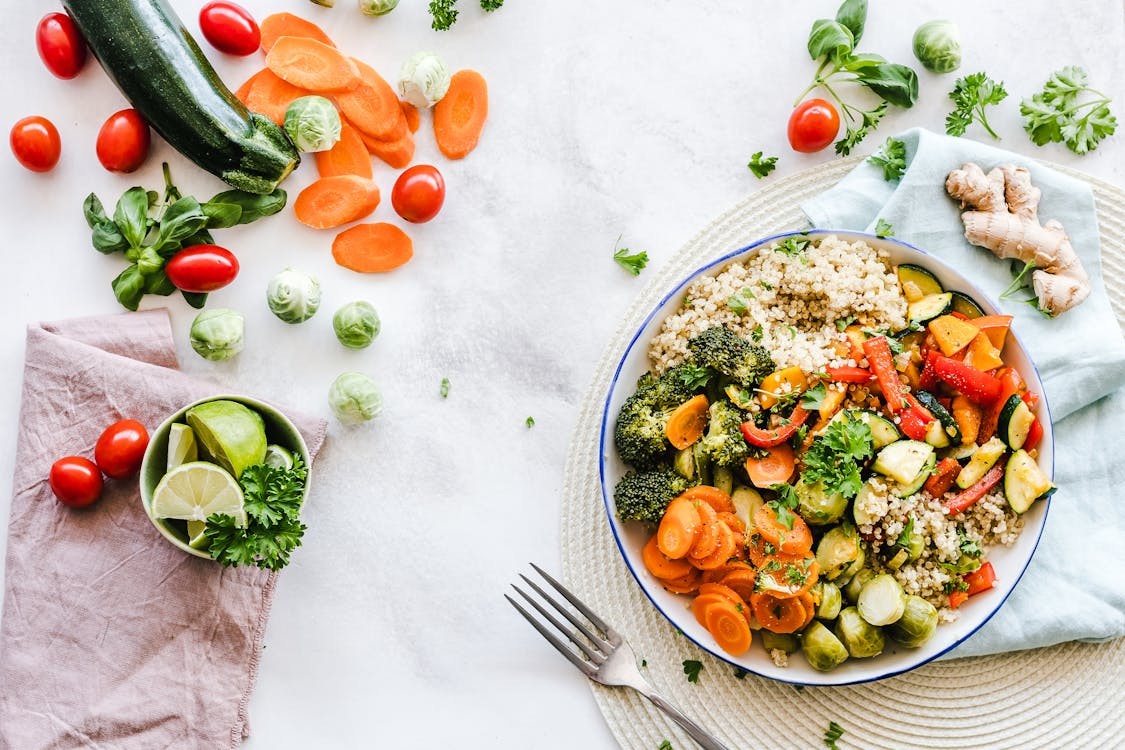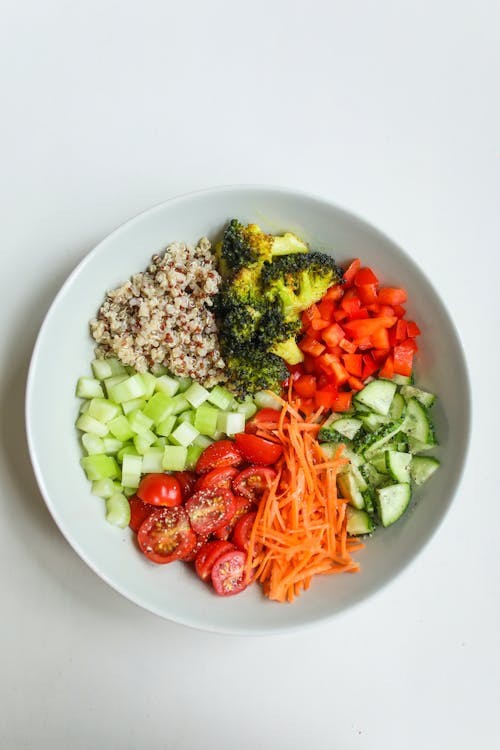Ultra processed foods spark debates, but understanding their role in our diets is crucial; Let’s explore a balanced approach to nutrition with insights from FOODS.EDU.VN. Examining processed edibles and their potential benefits, we aim to clarify their place in a healthy lifestyle, focusing on convenience foods and dietary guidelines.
1. Defining Ultra-Processed Foods: A Closer Look
The world of nutrition is constantly evolving, and one topic that has sparked considerable debate is ultra-processed foods (UPFs). But what exactly are they, and why are they under such scrutiny? Let’s delve into a comprehensive definition, explore various classifications, and examine real-world examples to gain a clearer understanding.
1.1. What Classifies a Food as Ultra-Processed?
According to the NOVA food classification system, UPFs are industrial formulations made entirely or mostly from oils, fats, sugars, starch, and protein isolates. They often include additives like artificial flavors, colors, emulsifiers, and preservatives to enhance palatability, shelf life, and appearance. These foods undergo numerous processing steps, often involving techniques not typically used in home cooking.
1.2. The NOVA System: A Comprehensive Classification
The NOVA system categorizes foods into four groups:
- Unprocessed or Minimally Processed Foods: These are foods in their natural state or those that have undergone minimal processing like cleaning, drying, or freezing. Examples include fruits, vegetables, eggs, and whole grains.
- Processed Culinary Ingredients: These are substances extracted from Group 1 foods or nature, such as oils, fats, sugar, and salt, used in home cooking.
- Processed Foods: These are made by adding salt, sugar, oil, or other Group 2 ingredients to Group 1 foods. Examples include canned vegetables, simple breads, and cheeses.
- Ultra-Processed Foods: These are industrial formulations made with little to no whole foods and are high in additives.
1.3. Examples of Ultra-Processed Foods
To paint a clearer picture, here are some common examples of UPFs:
- Soft drinks and sweetened beverages
- Packaged snacks like chips, cookies, and candy
- Ready-to-eat meals, including frozen dinners and instant noodles
- Processed meats like hot dogs, sausages, and deli meats
- Breakfast cereals
- Baked goods such as cakes, pastries, and doughnuts
- Flavored yogurts and desserts
- Some plant-based meat alternatives
1.4. Why Understanding UPFs Matters
With the rise of convenience and fast-paced lifestyles, UPFs have become increasingly prevalent in modern diets. Their accessibility, affordability, and long shelf life make them attractive options for many. However, it’s essential to understand their composition and potential impact on health, as excessive consumption has been linked to various adverse health outcomes.
Navigating the complex world of nutrition can be challenging, but resources like FOODS.EDU.VN offer valuable insights and practical advice to help you make informed choices. Whether you’re looking to understand the basics of food processing or seeking inspiration for nutritious meals, FOODS.EDU.VN provides a wealth of information to support your journey toward a healthier lifestyle. Don’t hesitate to visit us at 1946 Campus Dr, Hyde Park, NY 12538, United States, or reach out via Whatsapp at +1 845-452-9600.
2. The Great Debate: Are Ultra-Processed Foods Inherently Bad?
Ultra-processed foods (UPFs) have become a hot topic in the nutrition world, often portrayed as villains due to their association with various health concerns. However, a balanced perspective is essential, considering the nuances and complexities involved. Let’s explore the arguments for and against UPFs, examining the potential health risks and benefits associated with their consumption.
2.1. The Case Against Ultra-Processed Foods
Numerous studies have linked high consumption of UPFs to adverse health outcomes:
- Increased Risk of Chronic Diseases: Studies suggest a correlation between UPF consumption and a higher risk of obesity, type 2 diabetes, cardiovascular diseases, and certain cancers.
- Poor Diet Quality: UPFs often displace nutrient-dense foods in the diet, leading to deficiencies in essential vitamins, minerals, and fiber.
- Addictive Properties: The combination of high sugar, salt, and fat in UPFs can stimulate the brain’s reward system, leading to overconsumption and potential addiction.
- Gut Health Issues: Additives and emulsifiers in UPFs may disrupt the gut microbiome, leading to inflammation and digestive problems.
For example, a 2019 study published in The American Journal of Clinical Nutrition found that a diet high in UPFs was associated with increased energy intake and weight gain compared to a diet based on minimally processed foods.
2.2. The Counterarguments: Why Not All UPFs Are Evil
Despite the negative press, not all UPFs are created equal, and some may offer certain benefits:
- Convenience and Accessibility: UPFs can be a convenient and affordable option for individuals with limited time, resources, or access to fresh foods.
- Fortification and Enrichment: Some UPFs are fortified with essential nutrients like vitamins and minerals, helping to address deficiencies in certain populations.
- Shelf Stability: UPFs often have a longer shelf life than fresh foods, reducing food waste and ensuring availability during emergencies or in remote areas.
- Plant-Based Options: Many plant-based meat and dairy alternatives are classified as UPFs, offering options for individuals following vegetarian or vegan diets.
2.3. The Importance of Overall Diet Quality
Rather than demonizing all UPFs, experts emphasize the importance of focusing on overall diet quality:
- Prioritize Whole Foods: A diet rich in fruits, vegetables, whole grains, lean proteins, and healthy fats should form the foundation of a healthy eating pattern.
- Moderate Consumption: UPFs can be consumed in moderation as part of a balanced diet, without significantly compromising health.
- Mindful Choices: Select UPFs that are lower in sugar, salt, and unhealthy fats, and higher in fiber and essential nutrients.
2.4. Navigating the Gray Areas
Distinguishing between “good” and “bad” UPFs can be challenging. Here are some tips:
| Food Category | Healthier Options | Less Healthy Options |
|---|---|---|
| Breakfast Cereals | Whole grain cereals with low sugar content | Highly processed cereals with added sugars and artificial flavors |
| Snacks | Trail mix, nuts, seeds | Chips, candy, cookies |
| Ready-to-Eat Meals | Frozen meals with lean protein, vegetables, and whole grains | High-sodium, high-fat, and low-fiber frozen dinners |
| Plant-Based Alternatives | Fortified plant-based milks and meat alternatives with low additives | Heavily processed alternatives with high sodium and unhealthy fats |








2.5. Seeking Expert Guidance
Navigating the complex landscape of UPFs and nutrition can be overwhelming. Resources like FOODS.EDU.VN provide evidence-based information, practical tips, and delicious recipes to help you make informed choices. Whether you’re looking to improve your overall diet quality or explore new culinary adventures, FOODS.EDU.VN is your trusted partner in achieving your health and wellness goals. Feel free to contact us at +1 845-452-9600 for personalized advice or visit our website FOODS.EDU.VN for more information. We are located at 1946 Campus Dr, Hyde Park, NY 12538, United States.
3. The Science Behind Ultra-Processed Foods: What Research Reveals
To truly understand the impact of ultra-processed foods (UPFs) on our health, it’s essential to delve into the scientific research that has explored their effects. From studies on nutrient profiles to investigations into processing methods and their impact on the body, let’s examine the evidence that shapes our understanding of UPFs.
3.1. Nutritional Composition: A Deep Dive
UPFs are often characterized by their high levels of sugar, salt, and unhealthy fats, and their low levels of essential nutrients like vitamins, minerals, and fiber. However, not all UPFs fit this profile:
- Macronutrient Imbalance: Many UPFs are energy-dense but nutrient-poor, contributing to weight gain and metabolic disorders.
- Micronutrient Deficiencies: Excessive consumption of UPFs can displace nutrient-rich foods, leading to deficiencies in essential vitamins and minerals.
- Fiber Depletion: UPFs are often low in fiber, which is crucial for digestive health, blood sugar control, and satiety.
3.2. Processing Methods: Unraveling the Complexity
The methods used to produce UPFs can significantly alter their nutritional properties and potential health effects:
- High-Heat Processing: Techniques like extrusion and frying can generate harmful compounds like acrylamide and advanced glycation end products (AGEs).
- Hydrogenation: The process of hydrogenating fats to increase shelf life can create trans fats, which are associated with an increased risk of heart disease.
- Additives and Emulsifiers: Artificial colors, flavors, preservatives, and emulsifiers can have adverse effects on gut health and overall well-being.
3.3. Impact on Health: Evidence from Studies
Numerous studies have investigated the impact of UPF consumption on various health outcomes:
- Weight Gain and Obesity: A 2019 study published in Cell Metabolism found that individuals consuming a diet high in UPFs ate more calories and gained more weight compared to those consuming a minimally processed diet.
- Metabolic Disorders: Research suggests a link between UPF consumption and an increased risk of type 2 diabetes, insulin resistance, and metabolic syndrome.
- Cardiovascular Disease: Studies have shown that high intake of UPFs is associated with a higher risk of heart disease, stroke, and other cardiovascular events.
- Cancer: Some research indicates a potential link between UPF consumption and an increased risk of certain cancers, including breast, colorectal, and prostate cancer.
3.4. Gut Microbiome Disruption: A Growing Concern
Emerging research suggests that UPFs can negatively impact the gut microbiome, the complex community of microorganisms living in our digestive system:
- Reduced Diversity: UPF consumption has been linked to reduced diversity of gut bacteria, which is associated with various health problems.
- Inflammation: Additives and emulsifiers in UPFs can promote inflammation in the gut, leading to digestive disorders and systemic inflammation.
- Impaired Barrier Function: UPFs may compromise the integrity of the gut lining, allowing harmful substances to enter the bloodstream and trigger an immune response.
3.5. The Role of FOODS.EDU.VN in Nutrition Education
Staying informed about the latest scientific findings on UPFs and nutrition is crucial for making informed choices about your diet. FOODS.EDU.VN is committed to providing evidence-based information, practical tips, and delicious recipes to support your journey toward a healthier lifestyle.
Whether you’re looking to understand the complexities of food processing or seeking inspiration for nutritious meals, FOODS.EDU.VN offers a wealth of resources to empower you. Visit our website FOODS.EDU.VN to explore our extensive library of articles, recipes, and expert advice. For personalized guidance, contact us at +1 845-452-9600 or visit us at 1946 Campus Dr, Hyde Park, NY 12538, United States.
4. Practical Strategies: Balancing Ultra-Processed Foods in Your Diet
While it’s essential to be aware of the potential health risks associated with ultra-processed foods (UPFs), completely eliminating them from your diet may not be realistic or necessary. Instead, focus on adopting practical strategies to balance UPF consumption with nutrient-rich whole foods. Let’s explore actionable tips and recommendations to help you navigate the complex world of food choices.
4.1. Prioritize Whole Foods: The Foundation of a Healthy Diet
Make whole, unprocessed foods the cornerstone of your eating pattern:
- Fruits and Vegetables: Aim for at least five servings per day, choosing a variety of colors and types.
- Whole Grains: Opt for brown rice, quinoa, oats, and whole wheat bread over refined grains.
- Lean Proteins: Include sources like poultry, fish, beans, lentils, and tofu in your meals.
- Healthy Fats: Incorporate avocados, nuts, seeds, and olive oil into your diet.
4.2. Mindful Consumption: Awareness is Key
Pay attention to your eating habits and make conscious choices about the foods you consume:
- Read Food Labels: Check the ingredient list and nutrition facts panel to identify UPFs and assess their nutritional value.
- Portion Control: Be mindful of serving sizes, especially when consuming UPFs, to avoid overeating.
- Eat Slowly and Savor Each Bite: This can help you recognize feelings of fullness and prevent mindless snacking.
4.3. Smart Swaps: Upgrading Your Choices
Replace highly processed foods with healthier alternatives:
| Instead of | Try |
|---|---|
| Sugary Breakfast Cereal | Oatmeal with fruit and nuts |
| Processed Snack Bars | Homemade trail mix or a piece of fruit |
| Soda or Sweetened Beverages | Water, herbal tea, or infused water |
| Pre-Packaged Frozen Meals | Homemade meals prepared in advance |
| Commercial Salad Dressings | Homemade vinaigrette with olive oil and vinegar |
4.4. Cooking at Home: Reclaim Control
Preparing your own meals allows you to control the ingredients and processing methods used:
- Plan Your Meals: Create a weekly meal plan to ensure you have healthy options on hand.
- Batch Cooking: Prepare large batches of food on the weekends to save time during the week.
- Experiment with Recipes: Explore new recipes and cooking techniques to make healthy eating more enjoyable.
4.5. Navigating Social Situations: Stay Prepared
When eating out or attending social gatherings, be proactive in making healthy choices:
- Review Menus in Advance: Choose restaurants with healthy options and plan your order ahead of time.
- Bring a Healthy Dish: Offer to bring a nutritious dish to share at potlucks and parties.
- Be Mindful of Alcohol Consumption: Limit your intake of sugary cocktails and opt for wine or light beer instead.
4.6. FOODS.EDU.VN: Your Partner in Healthy Eating
Adopting a balanced approach to UPF consumption requires knowledge, planning, and consistent effort. FOODS.EDU.VN is here to support you every step of the way, providing evidence-based information, practical tips, and delicious recipes to help you achieve your health and wellness goals.
Visit FOODS.EDU.VN to explore our extensive library of resources, including meal planning guides, healthy recipes, and expert advice on navigating the world of food choices. For personalized support, contact us at +1 845-452-9600 or visit us at 1946 Campus Dr, Hyde Park, NY 12538, United States.
5. The Socioeconomic Factors: Access, Affordability, and Ultra-Processed Foods
The debate surrounding ultra-processed foods (UPFs) often overlooks the significant socioeconomic factors that influence food choices. Access to healthy food options, affordability, and cultural considerations play crucial roles in shaping dietary patterns, particularly for marginalized communities. Let’s explore these complex issues and discuss how to promote equitable access to nutritious foods for all.
5.1. Food Deserts: Limited Access to Healthy Options
Food deserts are geographic areas where residents have limited access to affordable and nutritious foods, particularly fresh fruits, vegetables, and whole grains:
- Geographic Barriers: Food deserts are often located in low-income neighborhoods, rural areas, and communities with limited transportation options.
- Lack of Grocery Stores: These areas may lack full-service grocery stores, farmers’ markets, and other sources of fresh produce.
- Reliance on Convenience Stores: Residents may rely on convenience stores and fast-food restaurants, which typically offer a limited selection of UPFs.
5.2. Affordability: The Cost of Healthy Eating
The cost of healthy foods can be a significant barrier for low-income individuals and families:
- Higher Prices: Fresh produce, lean proteins, and whole grains are often more expensive than UPFs.
- Budget Constraints: Low-income households may have limited resources to allocate to food, forcing them to choose cheaper, less nutritious options.
- Government Assistance Programs: Programs like SNAP (Supplemental Nutrition Assistance Program) can help, but benefits may not be sufficient to cover the cost of a healthy diet.
5.3. Cultural Considerations: Food Traditions and Preferences
Cultural factors also play a role in food choices:
- Traditional Diets: Some cultures have traditional diets that are high in processed foods, such as refined grains and sugary beverages.
- Acculturation: Immigrants and refugees may adopt unhealthy eating habits as they acculturate to a new environment.
- Lack of Culturally Appropriate Options: Healthy food initiatives may not always consider the cultural preferences and dietary needs of diverse communities.
5.4. Addressing Food Insecurity: A Multifaceted Approach
Promoting equitable access to nutritious foods requires a comprehensive approach:
- Policy Changes: Implement policies that support local food production, reduce food waste, and incentivize healthy food retailers to locate in underserved areas.
- Community-Based Initiatives: Support community gardens, farmers’ markets, and food banks that provide access to fresh produce and healthy meals.
- Nutrition Education: Provide culturally relevant nutrition education programs that empower individuals to make informed food choices.
- Economic Empowerment: Create job opportunities and increase economic security to improve access to affordable and nutritious foods.
5.5. FOODS.EDU.VN: Advocating for Food Equity
FOODS.EDU.VN is committed to promoting food equity and supporting initiatives that improve access to nutritious foods for all. We believe that everyone deserves the opportunity to live a healthy life, regardless of their socioeconomic status or geographic location.
Visit FOODS.EDU.VN to learn more about our advocacy efforts and explore our resources on healthy eating, meal planning, and cooking on a budget. For personalized support, contact us at +1 845-452-9600 or visit us at 1946 Campus Dr, Hyde Park, NY 12538, United States.
6. The Future of Food: Innovations and Alternatives to Ultra-Processed Foods
As awareness of the potential health risks associated with ultra-processed foods (UPFs) grows, innovators and entrepreneurs are exploring new approaches to food production and consumption. From minimally processed alternatives to sustainable farming practices, let’s examine the exciting possibilities for a healthier and more sustainable future of food.
6.1. Minimally Processed Alternatives: Reimagining Convenience
Companies are developing convenient and affordable alternatives to UPFs that retain more of their natural nutrients:
- Ready-to-Cook Meal Kits: These kits contain pre-portioned ingredients and recipes for easy and healthy meals prepared at home.
- Frozen Fruits and Vegetables: Freezing preserves nutrients and extends shelf life, making it easier to incorporate healthy produce into your diet.
- Whole Grain Snacks: Look for snacks made with whole grains, nuts, seeds, and dried fruits, without added sugars, salt, or unhealthy fats.
6.2. Sustainable Farming Practices: Nourishing the Planet and People
Sustainable farming practices can improve the nutritional quality of food and reduce the environmental impact of food production:
- Regenerative Agriculture: This approach focuses on restoring soil health, increasing biodiversity, and reducing reliance on synthetic fertilizers and pesticides.
- Vertical Farming: Growing crops indoors in vertical stacks can increase yields, reduce water consumption, and minimize transportation costs.
- Agroforestry: Integrating trees and shrubs into agricultural systems can improve soil health, sequester carbon, and provide habitat for wildlife.
6.3. Food Technology: Innovations for a Healthier Future
Food technology is playing an increasingly important role in developing healthier and more sustainable food options:
- Precision Fermentation: This technology uses microorganisms to produce ingredients like proteins, fats, and sweeteners with enhanced nutritional profiles.
- Cellular Agriculture: Cultivating meat, poultry, and seafood from animal cells can reduce the environmental impact of animal agriculture and improve food safety.
- 3D Food Printing: This technology allows for the creation of customized foods with specific nutritional profiles and textures.
6.4. Policy and Regulation: Shaping the Food Environment
Government policies and regulations can play a crucial role in promoting healthier food choices and reducing the availability of UPFs:
- Taxes on Sugary Beverages: These taxes can discourage consumption of unhealthy drinks and generate revenue for public health initiatives.
- Restrictions on Food Marketing: Limiting the marketing of UPFs to children can help reduce their exposure to unhealthy products.
- Labeling Requirements: Clear and informative food labels can help consumers make informed choices about the foods they purchase.
6.5. FOODS.EDU.VN: Inspiring a Healthier Future
FOODS.EDU.VN is committed to inspiring a healthier future by providing information, resources, and support for individuals and communities to make informed choices about food. We believe that everyone has the power to create a more sustainable and equitable food system.
Visit FOODS.EDU.VN to explore our articles on sustainable farming, food technology, and healthy eating. For personalized support, contact us at +1 845-452-9600 or visit us at 1946 Campus Dr, Hyde Park, NY 12538, United States.
7. Expert Opinions: Insights from Nutritionists and Dietitians on Ultra-Processed Foods
To gain a deeper understanding of the complexities surrounding ultra-processed foods (UPFs), it’s essential to consider the perspectives of nutritionists and dietitians. These experts offer valuable insights based on scientific evidence and clinical experience, helping us navigate the often-confusing world of food choices. Let’s explore their opinions and recommendations on UPFs.
7.1. Balancing Convenience and Nutrition: A Realistic Approach
Many nutritionists and dietitians recognize that UPFs can play a role in modern diets, particularly for individuals with limited time or resources:
- Moderation is Key: Emphasize that UPFs can be consumed in moderation as part of a balanced diet, without significantly compromising health.
- Focus on Whole Foods: Encourage individuals to prioritize whole, unprocessed foods as the foundation of their eating pattern.
- Smart Swaps: Recommend healthier alternatives to highly processed foods, such as homemade snacks and meals.
7.2. Understanding the Nuances: Not All UPFs Are Created Equal
Experts stress the importance of distinguishing between “good” and “bad” UPFs:
- Nutrient-Poor vs. Nutrient-Dense: Highlight the difference between UPFs that are high in sugar, salt, and unhealthy fats and those that are fortified with essential nutrients.
- Ingredient Lists Matter: Advise individuals to read food labels carefully and choose UPFs with minimal additives and artificial ingredients.
- Prioritize Fiber and Protein: Recommend UPFs that are higher in fiber and protein to promote satiety and blood sugar control.
7.3. The Impact on Health: Long-Term Considerations
Nutritionists and dietitians emphasize the potential long-term health consequences of excessive UPF consumption:
- Chronic Diseases: Highlight the link between UPF consumption and an increased risk of obesity, type 2 diabetes, cardiovascular disease, and certain cancers.
- Gut Health: Discuss the negative impact of UPFs on the gut microbiome and recommend strategies to promote gut health.
- Mental Health: Address the potential link between UPF consumption and mental health issues, such as depression and anxiety.
7.4. Addressing Socioeconomic Factors: Promoting Food Equity
Experts recognize the importance of addressing socioeconomic factors that influence food choices:
- Food Deserts: Advocate for policies and initiatives that improve access to healthy foods in underserved communities.
- Affordability: Provide tips and resources for healthy eating on a budget, such as meal planning and cooking at home.
- Cultural Considerations: Offer culturally relevant nutrition education and meal planning resources.
7.5. FOODS.EDU.VN: Your Trusted Source for Expert Advice
FOODS.EDU.VN is committed to providing evidence-based information and expert advice to help you make informed choices about food. Our team of nutritionists and dietitians is dedicated to empowering you to achieve your health and wellness goals.
Visit FOODS.EDU.VN to explore our articles on healthy eating, meal planning, and cooking on a budget. For personalized support, contact us at +1 845-452-9600 or visit us at 1946 Campus Dr, Hyde Park, NY 12538, United States.
8. Ultra-Processed Foods and Children: Special Considerations
When it comes to ultra-processed foods (UPFs), children require special attention due to their unique nutritional needs and vulnerability to marketing tactics. Let’s explore the potential impact of UPFs on children’s health and development, and discuss strategies to promote healthy eating habits from an early age.
8.1. Nutritional Needs: Fueling Growth and Development
Children have specific nutritional needs to support their rapid growth and development:
- Essential Nutrients: They require adequate amounts of vitamins, minerals, protein, and healthy fats for optimal health.
- Brain Development: Nutrients like omega-3 fatty acids, iron, and choline are crucial for brain development and cognitive function.
- Bone Health: Calcium and vitamin D are essential for building strong bones and preventing osteoporosis later in life.
8.2. The Impact of UPFs: Potential Health Consequences
Excessive consumption of UPFs can have negative consequences for children’s health:
- Obesity: UPFs are often high in sugar, salt, and unhealthy fats, contributing to weight gain and obesity.
- Dental Caries: Sugary snacks and beverages can increase the risk of tooth decay.
- Nutrient Deficiencies: UPFs can displace nutrient-rich foods, leading to deficiencies in essential vitamins and minerals.
- Long-Term Health Risks: Childhood obesity and poor dietary habits can increase the risk of chronic diseases later in life.
8.3. Marketing Tactics: Targeting Young Consumers
Children are particularly vulnerable to marketing tactics used to promote UPFs:
- Appealing Packaging: Bright colors, cartoon characters, and catchy slogans can attract children’s attention.
- Celebrity Endorsements: Using celebrities or influencers to promote UPFs can influence children’s food preferences.
- Product Placement: Featuring UPFs in movies, TV shows, and video games can increase their visibility and appeal.
8.4. Strategies for Parents: Promoting Healthy Eating Habits
Parents can play a crucial role in promoting healthy eating habits for their children:
- Lead by Example: Model healthy eating habits by consuming nutritious foods and limiting UPFs.
- Limit Exposure to UPFs: Reduce the availability of UPFs in the home and avoid purchasing them at the grocery store.
- Offer Healthy Alternatives: Provide children with nutritious snacks and meals made with whole, unprocessed foods.
- Involve Children in Meal Preparation: Cooking together can teach children about healthy eating and encourage them to try new foods.
- Read Food Labels: Teach children how to read food labels and make informed choices about the foods they consume.
- Limit Screen Time: Reduce children’s exposure to advertising by limiting their screen time and monitoring the content they consume.
8.5. FOODS.EDU.VN: Supporting Families in Healthy Eating
FOODS.EDU.VN is committed to providing resources and support for families to promote healthy eating habits for children. We believe that every child deserves the opportunity to grow up healthy and strong.
Visit FOODS.EDU.VN to explore our articles on healthy eating for children, kid-friendly recipes, and tips for promoting healthy habits at home. For personalized support, contact us at +1 845-452-9600 or visit us at 1946 Campus Dr, Hyde Park, NY 12538, United States.
9. Conclusion: Navigating the Ultra-Processed Food Landscape with Awareness and Balance
In conclusion, the debate surrounding ultra-processed foods (UPFs) is complex and multifaceted. While excessive consumption of UPFs has been linked to various health risks, it’s essential to approach the issue with nuance and balance. By understanding the definition of UPFs, considering their potential health effects, and adopting practical strategies for balancing them in our diets, we can navigate the ultra-processed food landscape with awareness and make informed choices that support our overall health and well-being.
9.1. Key Takeaways:
- Definition: UPFs are industrial formulations made entirely or mostly from oils, fats, sugars, starch, and protein isolates, often with added artificial ingredients.
- Potential Health Risks: Excessive UPF consumption has been linked to obesity, type 2 diabetes, cardiovascular disease, and certain cancers.
- Not All UPFs Are Created Equal: Some UPFs are fortified with essential nutrients and can be a convenient option for individuals with limited time or resources.
- Socioeconomic Factors: Access to healthy food options, affordability, and cultural considerations play crucial roles in shaping dietary patterns.
- Practical Strategies: Prioritizing whole foods, mindful consumption, smart swaps, and cooking at home can help balance UPF consumption.
- Children’s Health: Special attention is needed to protect children from the potential negative effects of UPFs and promote healthy eating habits from an early age.
- The Future of Food: Innovations in food technology and sustainable farming practices offer exciting possibilities for a healthier and more sustainable food system.
9.2. A Balanced Approach:
Rather than demonizing all UPFs, focus on adopting a balanced approach to eating that prioritizes whole, unprocessed foods while allowing for moderate consumption of UPFs as part of a varied and enjoyable diet.
9.3. Empowering Yourself with Knowledge:
Staying informed about the latest research, seeking expert advice, and understanding the socioeconomic factors that influence food choices are crucial steps in empowering yourself to make healthy decisions.
9.4. FOODS.EDU.VN: Your Partner in Wellness:
FOODS.EDU.VN is committed to providing you with the knowledge, resources, and support you need to navigate the complex world of food and nutrition. We believe that everyone deserves the opportunity to live a healthy and fulfilling life.
Visit FOODS.EDU.VN to explore our extensive library of articles, recipes, and expert advice on healthy eating, meal planning, and cooking on a budget. For personalized support, contact us at +1 845-452-9600 or visit us at 1946 Campus Dr, Hyde Park, NY 12538, United States.
10. Frequently Asked Questions (FAQs) About Ultra-Processed Foods
Here are some frequently asked questions about ultra-processed foods (UPFs) to help you better understand this topic:
-
What exactly are ultra-processed foods?
Ultra-processed foods are industrial formulations made mostly from oils, fats, sugars, starch, and protein isolates, with additives like artificial flavors and preservatives. -
Why are ultra-processed foods considered unhealthy?
They are often high in sugar, salt, and unhealthy fats, and low in essential nutrients, potentially leading to chronic diseases. -
Are all processed foods bad for you?
No, not all processed foods are bad. Minimally processed foods like frozen vegetables retain nutrients and can be part of a healthy diet. -
How can I identify ultra-processed foods?
Check the ingredient list for unfamiliar additives, artificial flavors, and a high number of ingredients. -
Can I still eat ultra-processed foods in moderation?
Yes, you can consume them in moderation as part of a balanced diet that prioritizes whole foods. -
What are some healthier alternatives to ultra-processed snacks?
Opt for fruits, vegetables, nuts, seeds, and homemade snacks with natural ingredients. -
How do ultra-processed foods affect children’s health?
They can lead to obesity, nutrient deficiencies, and long-term health risks due to high sugar and unhealthy fat content. -
What role do socioeconomic factors play in ultra-processed food consumption?
Limited access to healthy food options and affordability can lead to higher consumption of UPFs in low-income communities. -
How can I reduce my intake of ultra-processed foods?
Plan meals, cook at home, read food labels, and make smart swaps for healthier options. -
Where can I find more information and resources about healthy eating?
Visit FOODS.EDU.VN for evidence-based information, practical tips, and delicious recipes to support your journey toward a healthier lifestyle.
foods.edu.vn is dedicated to providing you with reliable information and resources to help you make informed choices about your diet and overall well-being. Contact us at +1 845-452-9600 or visit us at 1946 Campus Dr, Hyde Park, NY 12538, United States.